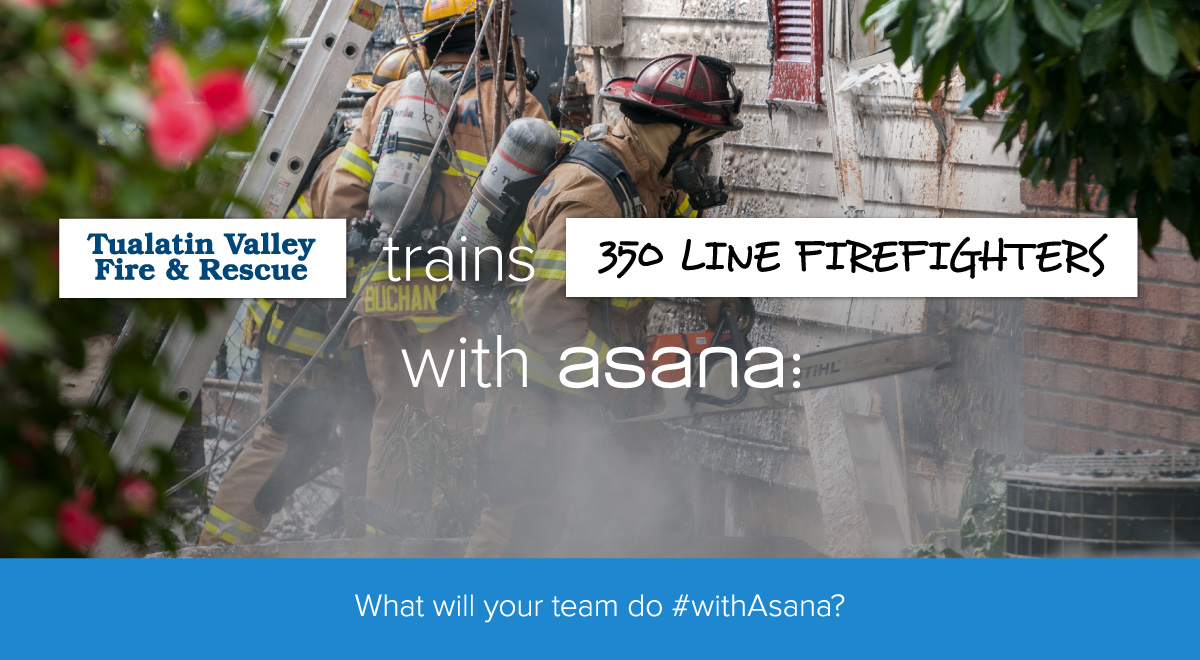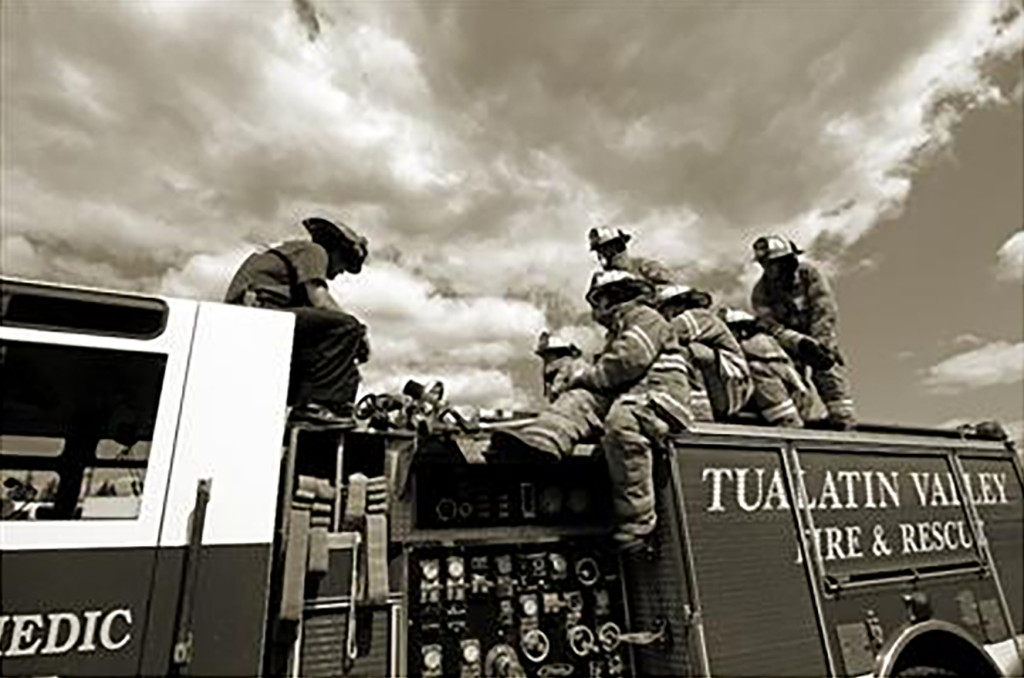This is a how a fire department runs on Asana

Tualatin Valley Fire & Rescue provides first responder services, fire, rescue, and technical rescue — among a dozen other community services — to nearly 1/2 million people in the Portland, Oregon area. But what sets TVFR apart is the organization’s dedication to actively testing and implementing new tools to help them work more effectively, not just out in the field.
When Brent VanKeulen started using Asana for himself, he quickly realized he could dramatically improve his team’s work and communications by sharing it with his team. We spoke with Brent about this, and many other qualities that make TVFR a forward-thinking fire department.
TVFR and Asana, in Brent’s words
If we deliver value — the best medical treatment for a person, for example — it equates to support and trust in our community. So our business model is based on value and relevance.
The foundation of our business is doing what’s best for our ‘customer’ — anyone we’re serving in our community. If we deliver value — the best medical treatment for a person, for example — it equates to support and trust in our community. So our business model is based on value and relevance. Like any other organization, we need tools that support our infrastructure and communications so that we can ultimately best serve our customers.
Before Asana:
- A lot of unorganized email, spreadsheets, and silo’d project management solutions: everyone had their own disparate, inaccessible system
- Some people invested in high-priced software solutions but others refused to use them
- Without a streamlined system, it was difficult to pass off projects
- A lot of status update meetings and time spent talking about the past rather than the future
- System created a lot of duplicate efforts. A commonly-used phrase was, “Oh, you’re working on that, too?”

More than 911 calls
I have an immediate staff of 11 direct reports, but we coordinate training initiatives and projects with 350 line firefighters. A lot of people think that a firefighter is someone who just responds to 911 calls, but most days, firefighters are training and taking care of their equipment (and of course, they also respond to calls). My team coordinates all training initiatives and projects with our organization’s firefighters, which is no easy task. Firefighters work on a 24-48 hour schedule, which makes it difficult to make real-time connections.

6 ways a fire department uses Asana
We rely on Asana to help us run our learning management system. But that’s just the beginning.
Our work spans the gamut of training: from developing content for everything from simulations to demolition, to moving that content through to the appropriate individuals, we rely on Asana to help us run our learning management system. But that’s just the beginning.
- We run our entire budget process through Asana: new budget requests, any questions I have about equipment that we’re buying, initiatives that require personnel costs, and everything in between are added as tasks, so nothing falls through the cracks.
- 1-1 meetings and performance appraisals are also run in Asana: keeping detailed tasks around each individual’s progress helps me have more productive meetings, and ensure that every teammate feels valued.
- We have a CRM-like project: we work with a lot of external partners and agencies. We maintain a list of people in this project with notes on who they are, why they’re important, and who at our organization is connected to them.
- We use Areas of Responsibility: after reading about how Asana uses AoRs to distribute responsibility, I decided we’d use it for our organization. We have a project with every staff member’s name and their responsibility.
- We have a benchmark project for all training events: to keep track of all our training initiatives, we ensure that all events are added to the main benchmark project for training (since tasks can live in multiple projects).
- We use Dashboards to get a bird’s eye view of work across the organization. Dashboards have really changed my day to day because they give me both a bird’s eye view of what’s happening, and allow me to dig into granularities. I can now say things like, “In the first quarter of 2015, this is where all events are happening.” This allows me to distribute work quickly and effectively.

In it together
When people would email, I’d simply redirect them into Asana.
I knew I wanted my team to use Asana early on, but recognized that not everyone would be as enthusiastic (out of the gate) to switch from their existing workflows. I decided to be strategic: I identified my early adopter power users, then had a staff meeting and told everyone I wanted to run staff meetings out of Asana. I started by assigning everyone specific tutorial videos to watch, and followed the recommendations in the Guide. Some people were really excited, another group was open, and another was a little more hesitant. I gave those people time, because I knew they’d recognize the value.
I made sure to highlight team successes in Asana, even keeping ‘Asana moments’ in our meeting agenda, and asking teammates to share something that worked really well for them. I’d also routinely ask the team if anyone was having a hard time with anything — this was a good opportunity to set conventions. When people would email, I’d simply redirect them into Asana. It took a few months for us all to form a collective habit, but now everyone is there, and as an organization, we’ve never had things run more smoothly.
Are you using Asana to transform your team’s workflow (or to save lives like TVFR?) We’d love to hear your story. Leave a comment or email stories@asana.com. And tell us what you’ve accomplished #withasana on Twitter, Instagram, and Facebook.

